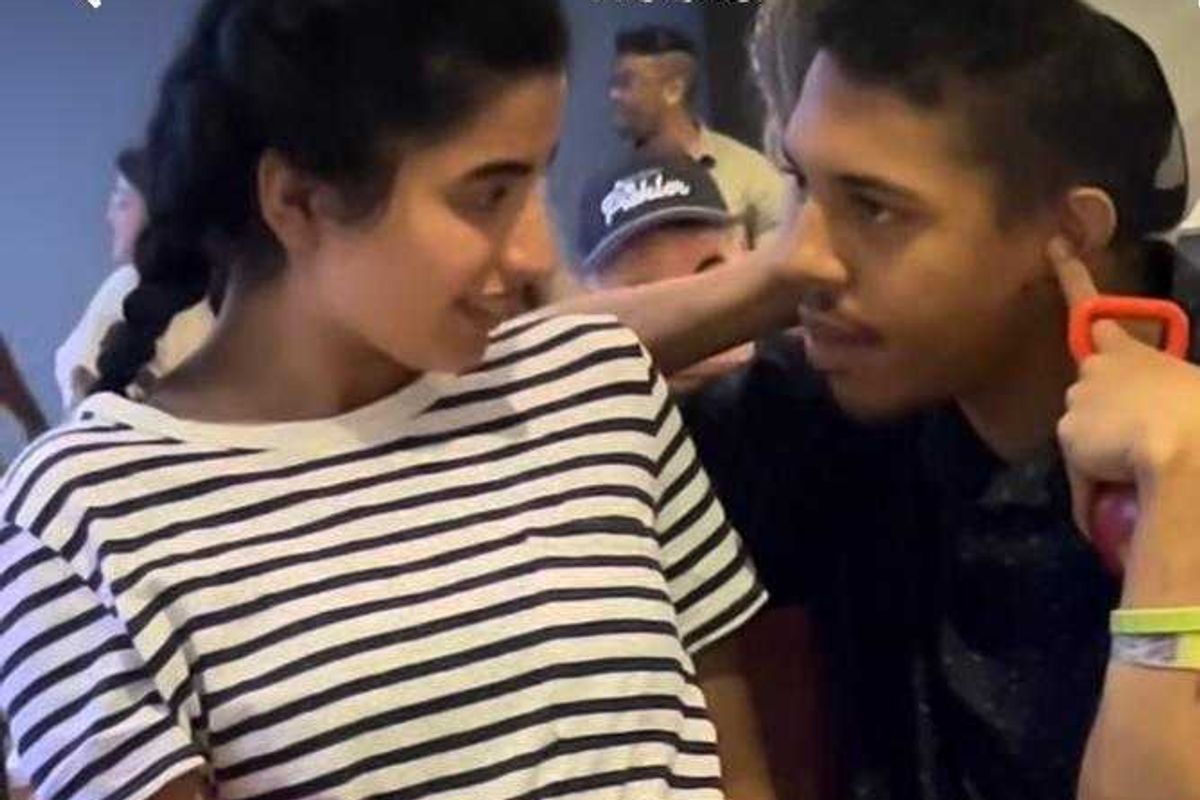The actual history of these Confederate statues explains why they should come down.
Robert E. Lee, Jefferson Davis, and P.G.T. Beauregard were responsible for a war that killed more than 600,000 Americans to defend the right to keep millions more enslaved.
Years after the end of that war, the City of New Orleans honored each of the three men with a statue.
Recently, those statues finally came down.
A statue of Robert E. Lee is removed in New Orleans. Photo by Scott Threlkeld/AP.
Mayor Mitch Landrieu delivered an emotional speech commemorating the day Lee's statue was removed from its home in Lee Circle where it had stood for 133 years.
New Orleans Mayor Mitch Landrieu. Photo by Cliff Owen/AP.
Landrieu's speech is remarkable not for its full-throated condemnation of the Confederate figures memorialized in stone, but for addressing why the statues were put there in the first place.
Critics of the move to take the memorials down, which was approved by the city council, insist the statues represent New Orleans' "heritage," and their removal is tantamount to "denying history."
Landrieu's argument — one backed by a growing historical consensus — was that the monuments were not erected as sober tributes to fallen military leaders, but as a political act, decades after the Civil War, in a conscious attempt to whitewash the past.
"The historic record is clear: the Robert E. Lee, Jefferson Davis, and P.G.T. Beauregard statues were not erected just to honor these men, but as part of the movement which became known as The Cult of the Lost Cause. This ‘cult’ had one goal — through monuments and through other means — to rewrite history to hide the truth, which is that the Confederacy was on the wrong side of humanity."
With the end of Reconstruction, which abortively attempted to establish political equality for blacks throughout the South, lawmakers throughout the region began valorizing Confederate figures to assert white control while simultaneously playing down those figures' ties to slavery.
Photo by Kevin McGill/AP.
A 2016 study undertaken by the Southern Poverty Law Center found over 1,500 such public memorials spread across the United States. As Landrieu stated:
"After the Civil War, these statues were a part of that terrorism as much as a burning cross on someone’s lawn; they were erected purposefully to send a strong message to all who walked in their shadows about who was still in charge in this city."
A fourth statue that came down commemorated the Battle of Liberty Place, in which white supremacist vigilantes overran New Orleans, ousting the state's integrationist government for several days.
An inscription on the original Liberty Place monument read: "United States troops took over the state government and reinstated the usurpers but the national election November 1876 recognized white supremacy in the South and gave us our state."
In his speech, Landrieu acknowledged that many of his constituents are emotionally attached to the statues, though they might not be fully aware of the context surrounding their construction.
Protestors rally against removing Confederate monuments. Photo by Justin Sullivan/Getty Images.
The mayor, compassionately, refused to criticize those who support keeping the memorials in place, stressing the importance of learning and maturing:
"So I am not judging anybody, I am not judging people. We all take our own journey on race. I just hope people listen like I did when my dear friend Wynton Marsalis helped me see the truth. He asked me to think about all the people who have left New Orleans because of our exclusionary attitudes."
He continued by asking those protesting the monuments' removal to consider them from the perspective of others, particularly those whose families were affected by the evil legacy of slavery and segregation.
"Another friend asked me to consider these four monuments from the perspective of an African American mother or father trying to explain to their fifth grade daughter who Robert E. Lee is and why he stands atop of our beautiful city. Can you do it?"
There's no easy way to reconcile two versions of history.
The only way to do so is by, as Landrieu asserted, grappling with the past honestly and openly.
Often, the process is slow and painful. It involves acknowledging mistakes, empathizing with others, and letting go of deeply rooted beliefs.

Occasionally, if done meticulously and assiduously, it can lead to lasting reconciliation.
From 1861 to 1865, Confederate leaders, like Robert E. Lee, Jefferson Davis, and P.G.T. Beauregard, fought to keep human beings as property. The following century saw political leaders throughout the United States fighting to deny those same human beings full citizenship — a struggle memorialized by the statues that, until recently, loomed over the city of New Orleans.
Taking down the statues, Landrieu insists, is a necessary first step toward making his community — now inhabited by the descendants of both enslaved people and those who kept them in chains — whole.
"Centuries-old wounds are still raw because they never healed right in the first place," he said in the speech.
Here's hoping that starts now.
You can (and should) read the full speech here.



 Tony Trapani received the most important letter of his life, but he didn't see it for 50 years Photo by
Tony Trapani received the most important letter of his life, but he didn't see it for 50 years Photo by  Tony and Samuel didn't waste time thinking about what might have been if he'd seen the letter earlier. Photo by
Tony and Samuel didn't waste time thinking about what might have been if he'd seen the letter earlier. Photo by 
 Public Media Actors On Actors GIF by PBS SoCal
Public Media Actors On Actors GIF by PBS SoCal 

